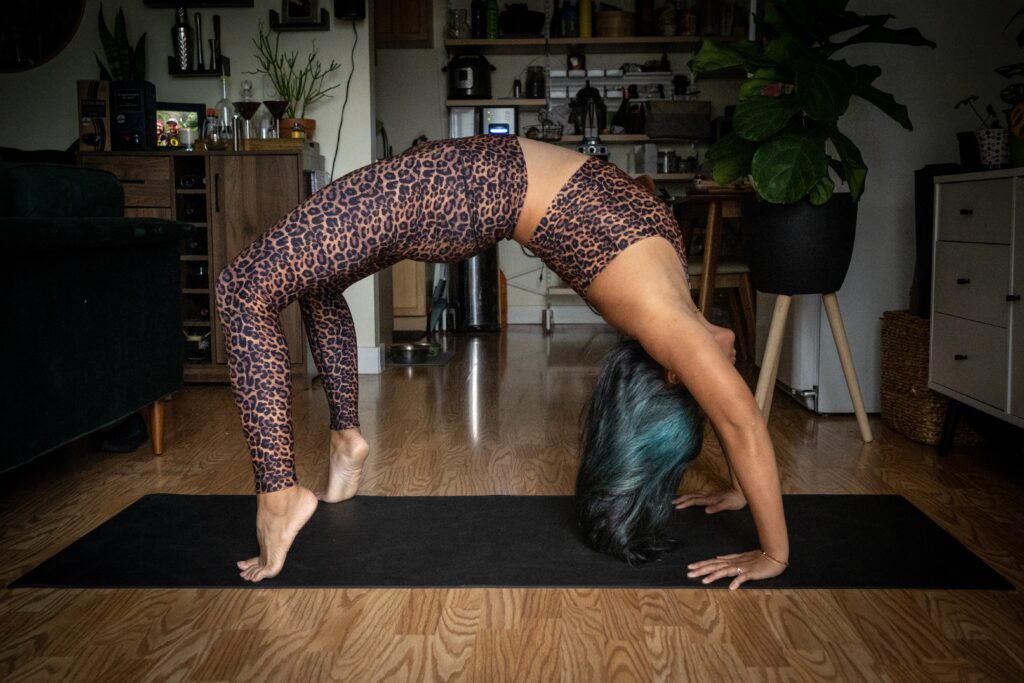In today’s fast-paced world, stress has become a common companion for many women. The body’s response to stress includes the release of cortisol. A hormone that, when chronically elevated, can lead to various health issues. Finding effective ways to manage cortisol levels is crucial for overall well-being.
Pilates instructor, Sabrina Seymore, can relate as she began her fitness journey and experimented with different types of movement ten years ago. One such approach is incorporating low-impact workouts into your routine. Let’s look into the benefits of low-impact exercises for balancing cortisol levels in women.
Understanding Cortisol
Cortisol, often referred to as the “stress hormone,” is produced by the adrenal glands and plays a vital role in our body’s response to stress. According to Seymore, it’s very important to understand that cortisol’s effect on fat metabolism is part of the body’s natural response to stress. In acute situations, cortisol is essential for our survival, as it helps us react quickly to threats. The pilates guru also shared that cortisol affects fat burning in women by metabolism and energy regulation, appetite and food cravings, fat storage, muscle breakdown, hormonal imbalances, and stress and fat accumulation.
“Chronic stress and consistently high cortisol levels can lead to health problems and make it more challenging for women (and men) to burn fat and maintain a healthy weight” Seymore explained.

Low-Impact Workouts
Low-impact workouts are a gentle yet effective way to manage stress and balance cortisol levels. These exercises are characterized by their minimal strain on joints and lower intensity. Making them suitable for individuals of all fitness levels, including those who may have physical limitations.
“I personally like breathing exercises, roll-down exercises, spinal mobility movements, cat-cow stretch, single leg circles, child’s pose variation (my favorite), visualization, and supported restorative poses such as the small ball or foam rollers. The effectiveness of these exercises in reducing stress and cortisol levels lies in their ability to promote mindfulness, relaxation, and improved body awareness” said Sabrina.
Benefits of Low-Impact Workouts
Stress Reduction
Low-impact workouts, such as yoga, pilates, and tai chi, promote relaxation and mindfulness. They focus on controlled movements, deep breathing, and gentle stretching, all of which help reduce stress and lower cortisol levels.
Improved Sleep
Chronic stress often leads to disrupted sleep patterns. Engaging in low-impact exercises can improve the quality of your sleep, helping your body recover and reset its cortisol levels.
Weight Management
Elevated cortisol levels can contribute to weight gain, particularly around the abdominal area. Low-impact workouts, when combined with a balanced diet, can aid in weight management by reducing cortisol-related fat storage.
Enhanced Mood
Regular physical activity, even of the low-impact variety, triggers the release of endorphins, which are natural mood lifters. As a result, these workouts can alleviate symptoms of anxiety and depression often associated with high cortisol levels.
Low-Impact Workouts to Consider
Pilates
“Pilates is a form of low-impact exercise that emphasizes core strength, flexibility, and body awareness that can have a positive impact on cortisol levels particularly in the context of stress management”, said Seymore.
As a pilates instructor, she has seen the benefits of practicing pilates to lower their cortisol levels. Her practice allows her to create a sanctuary where she escapes the demands of her busy life and focuses on herself. The mindful breathing and controlled movements help her to manage her stress and anxiety.
Yoga
Yoga combines physical postures, breathing exercises, and meditation to promote flexibility, balance, and relaxation. It’s an excellent choice for women looking to reduce stress and balance cortisol levels.
Walking
A simple, yet highly effective low-impact exercise is walking. It can be done almost anywhere and requires no special equipment. Regular walks in nature can provide a mental and emotional break from daily stressors. Try to incorporate a short daily walk first thing in the morning at your favorite park or during your lunch break at work.
Incorporating Low-Impact Workouts into Your Routine
Before you begin adjusting your workout split, remember these words from Seymore, “Pilates is not only about physical fitness but also about overall well-being, including mental and emotional health.”
Low-impact workouts offer a gentle yet effective way to combat chronic stress and reduce the negative impact of cortisol on the body. To reap the benefits of low-impact workouts for cortisol management, it’s essential to establish a consistent routine.
Whether you choose yoga, pilates, or simply walking, incorporating these activities into your daily life can make a difference. Start slowly, gradually increasing the intensity and duration of your workouts. Listen to your body, and if you have any underlying health concerns, consult a healthcare professional before beginning a new exercise regimen.
